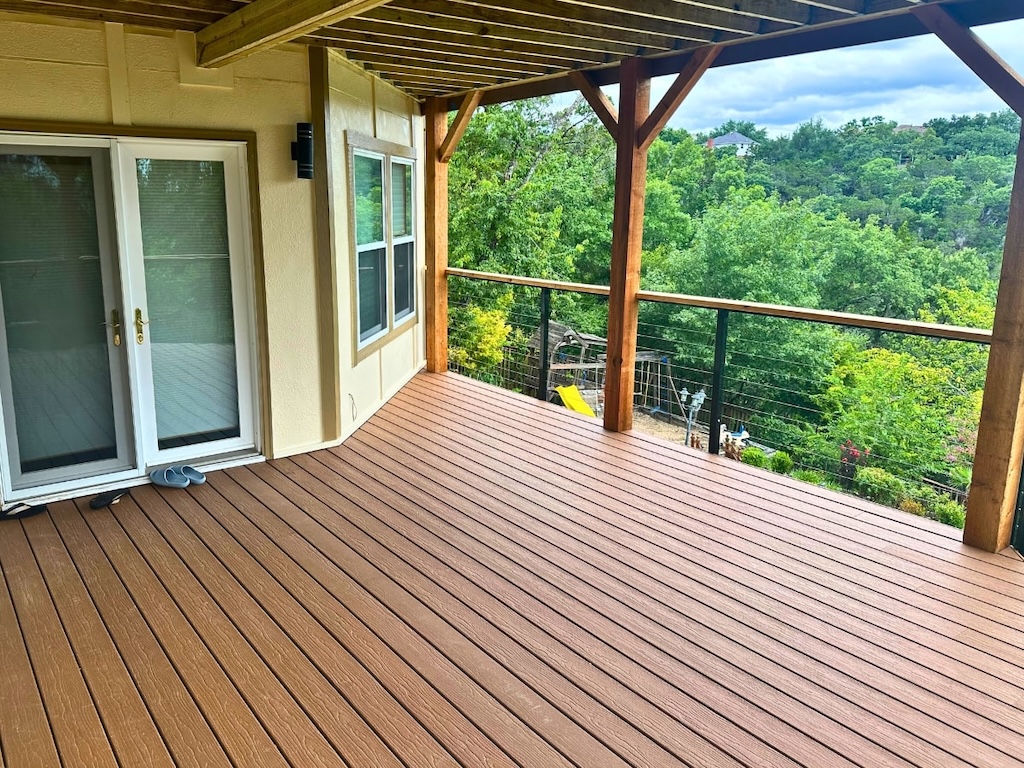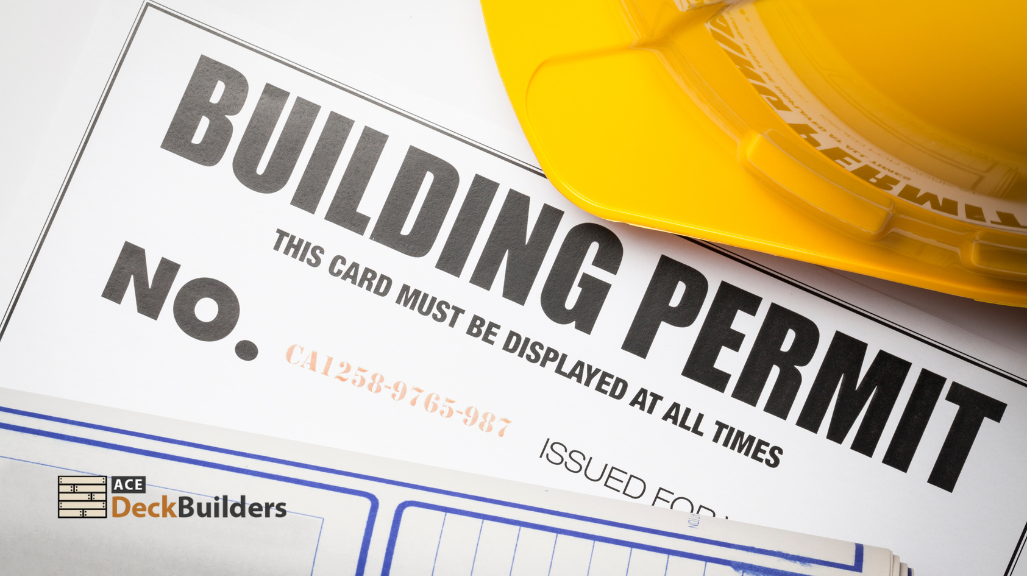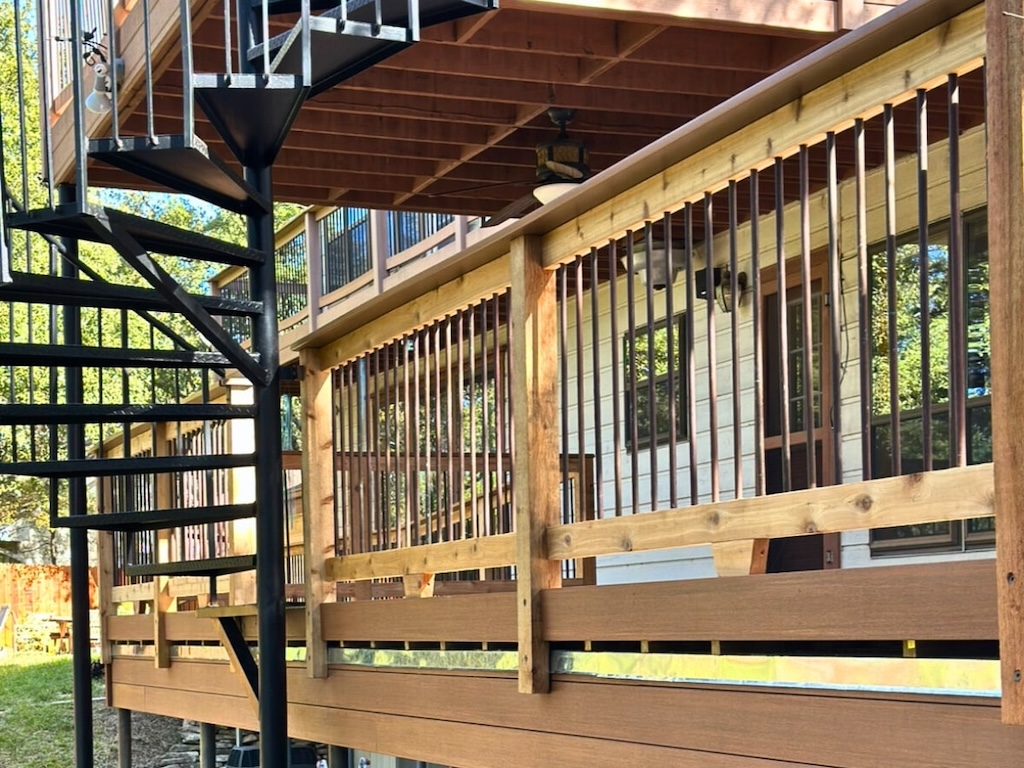If your project is a deck-only or primarily outdoor-living build (railing, stairs, shade, lighting), a professional deck builder is usually the best choice in Austin. Deck builders live and breathe permits, structural details, material choices for Texas heat, and inspection sequences specific to decks. Choose a general contractor when your project bundles multiple trades—e.g., home additions, structural reconfigurations, or whole-house remodels where the deck is just one piece. The tiebreaker: who can show you recent, local examples with clean inspections, itemized scopes, and a documented process.
Table of Contents
ToggleIntroduction: Same Goal, Different Toolkits

When you’re planning a new outdoor space, “contractor” sounds generic—but the person you hire, when hiring a contractor, shapes the feel, lifespan, safety, and cost of your deck. In Austin, where heat, UV exposure, wind events, and permitting norms can complicate otherwise simple builds, the right expertise pays for itself.
That’s why homeowners often ask: Do I need a deck builder or a general contractor? To answer, we’ll compare their typical scope, strengths, blind spots, and how they navigate Austin realities—so you can make the confident choice from day one. For a sense of the craftsmanship and process standard to aim for, start with Ace Deck Builders to see how a specialist frames design, permits, inspections, and closeout.
The Core Difference in Austin
Deck builders specialize in outdoor structures—decks, railings, stairs, pergolas, and accessories like lighting or kitchen modules. They’re fluent in deck-specific engineering (ledger attachments, flashing, joist spans, railing post connections), material behavior under high heat, and the local building codes, permit/inspection cadence for the City of Austin and neighboring jurisdictions.
General contractors (GCs) coordinate many trades across a larger scope: foundation, framing, HVAC, plumbing, electrical, interior finishes—plus exteriors. A GC’s strength is orchestration, often utilizing quality materials . If your project extends beyond the deck (e.g., a room addition, roofline changes, new openings in a structural wall), a GC is engineered for that scale.
Bottom line: In Austin, purpose-built expertise wins for a deck-only scope. Project orchestration wins when the deck is part of a bigger build.
When a Deck Builder Is the Better Fit
Choose a specialized deck builder when your scope is one or more of the following:
- New or replacement deck (single or multi-level), with code-compliant stairs and guard systems.
- Material-specific performance goals: cooler underfoot boards, low-maintenance composites, or hardwoods with the correct fasteners.
- Shade and comfort: pergolas, privacy walls, wind/sun orientation strategies.
- Complex railing details: tensioned systems, mixed materials, or integrated lighting.
- Site constraints: easements, tree roots, sloped yards, greenbelt adjacency.
A specialized builder has detail libraries—spans, ledgers, post bases, stair geometry—and can tailor them to Austin soil, drainage, and heat. They also anticipate inspection hold points to prevent your project from being stalled while waiting for framing sign-off.
When a General Contractor Makes More Sense
Pick a GC when the deck is just one chapter of your project novel:
- Room addition or major remodel involving changes to the structure, envelope, and interior systems.
- Roof tie-ins or significant structural steel that impact the home beyond the deck.
- Complete outdoor living suites that integrate gas lines, electrical subpanels, drainage, retaining walls, and hardscaping on a large scale.
- HOA architectural submissions that coordinate with significant exterior changes (siding, windows, roofing).
A GC manages design professionals, permits across multiple trades, and staging/sequencing to keep site traffic orderly and efficient.
Permits, Inspections, and Local Code: Who Handles What

Deck builders typically own the permit application and coordinate inspections (footings, framing, final) for deck-only scopes. They maintain ready-to-submit plan templates tailored for local reviewers and provide inspection checklists, ensuring the site is inspection-ready without requiring rework.
GCs manage a broader permit tree (building, MEP trades). They’re used to shepherding multiple inspectors with dependencies (e.g., electrical rough-in before ceiling close). If your deck includes gas, complex electrical, or structural tie-ins to new interior work, a GC is set up for that complexity.
Austin tip: When hiring a professional, ask any candidate to show a recent, approved plan set and inspection tags from jobs in your ZIP. Reviewing those artifacts is the fastest way to separate marketing from mastery.
Structure & Safety: Ledgers, Footings, Spans, and Railings
The most common deck failures are structural, not cosmetic. Your pro should be able to teach you the reasoning behind each element:
- Ledger & flashing: Correct fasteners and patterns; continuous flashing that protects the house from water intrusion; tapes/membranes at critical interfaces as specified.
- Footings: Depth/diameter appropriate for soil/load; inspector sign-off before pour; post bases that avoid ground contact.
- Framing: Joist spacing and spans that match the board type; blocking for stairs and rail posts; ventilation under low decks.
- Railings: Code-compliant height, post attachment that resists racking, graspable handrails, safe stair rise/run.
A deck builder typically carries a thicker detail library specific to these connections as they work with them daily. A GC is fully capable—but only if decks are a frequent part of their portfolio.
Material Selection in Texas Heat: Cedar, Composites, PVC, Ipe
Austin’s heat and UV drive different decisions than milder markets:
- Cedar/softwoods: Cooler underfoot and classic aesthetics; need a realistic stain/seal cadence (often 12–24 months).
- Composites & PVC: Offers lower maintenance and good color stability. However, some lines run hotter under full sun, so that lighter hues can help. Additionally, manufacturer rules on ventilation, gapping, and fasteners are essential.
- Hardwoods (e.g., Ipe): Dense, durable, gorgeous; require pre-drilling/quality fasteners and color maintenance if you want to avoid natural graying.
The pro you hire should bring sample boards, encourage you to heat-test them in your yard for a week, and outline a 10-year total cost comparison that includes maintenance cycles.
Want an end-to-end overview of the professional build sequence—from design to permits to inspection milestones—so you can benchmark proposals? See how a specialist structures deck installation in Austin.
Thinking about timing or replacing an aging structure instead? Compare the scope and lifecycle costs in a deck replacement in Austin walkthrough for realistic expectations and upgrade paths.
If you’re still interviewing firms, skim a homeowner-friendly primer on questions to ask before hiring a deck contractor for diy projects to stress-test proposals and timelines.
Scheduling, Budgeting & Change Orders

Scheduling: Deck builders often show a Gantt with inspection hold points (footings → framing → final). GCs perform the same tasks while also managing interdependencies across trades.
Budgeting: Ask for itemized estimates—framing species, decking brand/series, railing style, lighting, skirting, fascia, demolition/haul-off, site protection. Insist on allowances for unknowns (rock excavation, hidden rot) and a simple, signed change-order process that pauses work until you approve.
Payment terms: Favor milestone-based schedules—permit approval, material delivery, inspection pass, and substantial completion—over heavy upfront payments.
Risk, Warranty, and After-Care
- Workmanship warranty: 1–3 years is common; ensure it’s written and covers the details most likely to fail (flashing, fasteners, rail attachments).
- Manufacturer warranties are only valid if installation follows the specified specs (gapping, ventilation, fasteners).
- Closeout: Look for a care packet (cleaning, stain schedule, warranty contacts), and confirm who to call if you notice movement, squeaks, or hardware corrosion.
Decision Framework (Use This Checklist)
Project scope
- Deck-only or integrated with additions/major remodel?
Evidence
- The recently approved plan set includes inspection tags, a detail sheet, and local photos.
Materials
- Sample boards left outside for heat testing; 10-year total cost summary.
Money & schedule
- Itemized estimate; written allowances; change-order steps; milestone payments; Gantt with hold points.
Warranty & after-care
- Written workmanship warranty; manufacturer coverage and conditions; closeout packet.
If a candidate struggles to provide these within a day or two, that friction usually repeats during your build.
FAQs
Often, yes. If your project is deck-only, a specialized deck builder is typically faster, more precise, and more cost-efficient because they execute the exact details daily.
Specialized deck builders routinely coordinate licensed subs for those scopes. If your outdoor kitchen integrates with larger home systems or a room addition, a GC can help orchestrate the broader permits and trades.
For deck-only projects, the deck builder typically schedules and meets inspectors for footings, framing, and final. In mixed-scope projects, the GC coordinates the inspection sequence across all trades.
Either can deliver, but a deck builder brings a deeper catalog of stair geometry, railing loads, and water management details that make multi-level decks feel solid and safe.
Not always—but GCs add value by coordinating multiple trades. If you don’t need that orchestration, you’re paying for a capability you may not use.
Get Your Austin Deck Built Right (Free Estimate)
If you’re leaning toward a specialist for clarity, cost control, and comfort under the Austin sun, we’ll map your options, materials for a new deck , permits, timeline, and budget in a clear, itemized proposal. Start your project with a free deck estimate in Austin.
